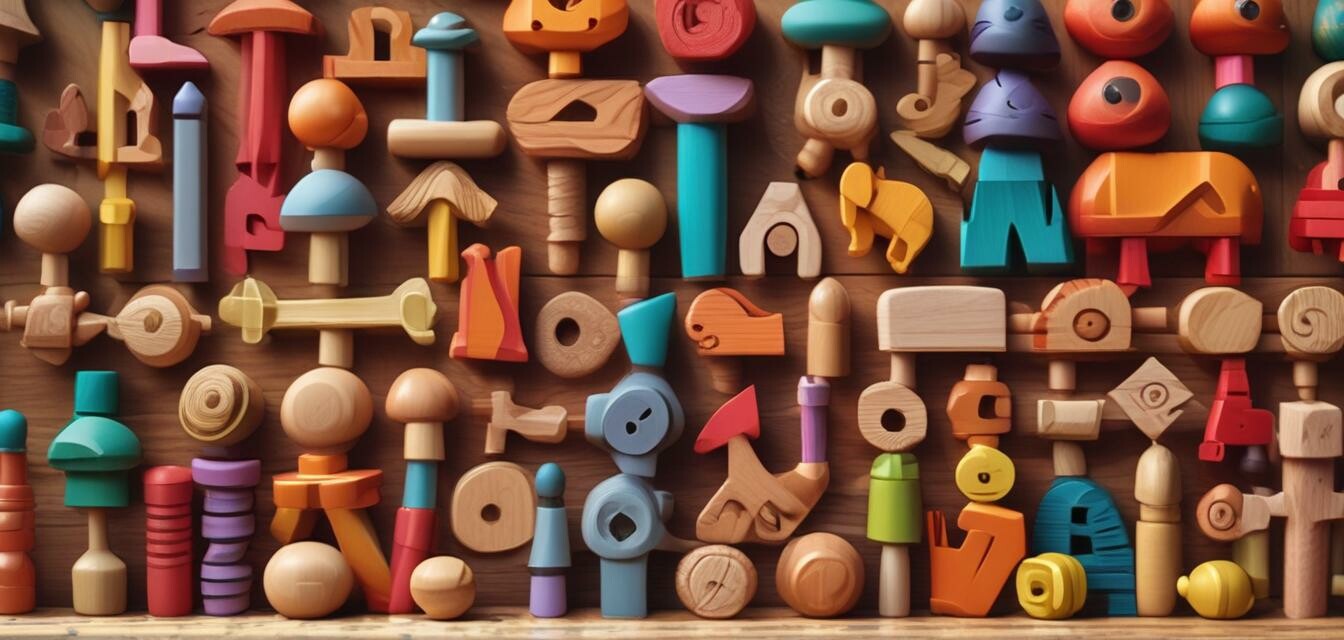
The evolution of wooden toys: Trends to watch in 2025
Key Takeaways
- Wooden toys are making a comeback due to their sustainable nature.
- Safety regulations and child development research influence design.
- Creative play and educational value remain central to wooden toy trends.
- Personalized and customizable options are rising in popularity.
- Eco-friendly finishes and non-toxic materials are essential in the manufacturing process.
Wooden toys have been a cherished part of childhood for generations, and their evolution continues unabated as we look towards 2025. With increasing awareness around sustainability and the importance of creative play, parents are seeking toys that align with their values. This article delves into the trends shaping the world of wooden toys, including safety standards, eco-friendly practices, and the growing emphasis on imaginative play.
1. Sustainability: The driving force
Sustainability is a key element of contemporary consumer choices, and it extends deeply into the toy sector. As the demand for eco-friendly products grows, wooden toys are becoming more popular than ever. Here’s why:
- Natural materials: Wood is a renewable resource, making it a sustainable choice compared to plastic.
- Durability: High-quality wooden toys can last for generations, reducing waste.
- Biodegradability: At the end of their lifecycle, wooden toys can decompose without harming the environment.
2. Safety and regulations
As we approach 2025, parents are more conscientious about the safety of their children’s toys. Consequently, manufacturers are adapting to meet safety standards that protect children during play. Some notable aspects include:
| Safety Aspect | Description |
|---|---|
| Non-toxic finishes | Using safe, non-toxic paints and varnishes is essential for children’s toys. |
| Rounded edges | Designing toys with smooth edges reduces the risk of injury. |
| Size regulations | Keeping small parts out of reach reduces choking hazards. |
3. Emphasis on creative play
Modern wooden toys are increasingly designed with creative play in mind, reflecting a shift in how children learn and engage with the world. Here are some key characteristics of wooden toys that promote imaginative play:
- Open-ended designs: Toys that offer limitless possibilities encourage children to use their imagination.
- Educational value: Many wooden toys now incorporate learning elements, such as shapes and numbers.
- Encouragement of social interaction: Toys that require collaboration promote social skills and teamwork.
4. Personalization trends
As consumers desire unique items, personalization is breaking into the wooden toy market. Customizable toys can include names, colors, or shapes tailored to individual preferences. This trend has several advantages:
- Unique gifts: Personalized toys make memorable gifts for special occasions.
- Connection: Customized items foster a personal connection between children and their toys.
- Emotional value: Personalized toys often carry sentimental significance.
5. Eco-friendly finishes and materials
The desire for sustainable products leads to an emphasis on eco-friendly finishes and materials. Some popular materials and finishes include:
| Material/Finish | Description |
|---|---|
| Bamboo | A fast-growing grass that is incredibly sustainable and durable. |
| Water-based paints | Non-toxic finishes that are safe for children and better for the environment. |
| Natural oils | Used for finishing that enhances wood’s natural beauty while being safe for kids. |
Conclusion
As we head towards 2025, the evolution of wooden toys continues to be influenced by trends that prioritize safety, sustainability, and creativity. With a growing emphasis on eco-friendly materials, parents can expect a wider range of products carefully designed to enrich their children’s play experience.
Pros
- Eco-friendly and sustainable materials.
- Durability leading to longevity.
- Encourages imaginative and educational play.
- Personalizable options for unique gifts.
Cons
- Can be more expensive than plastic options.
- Availability may be limited based on location.
For more insights into the world of wooden products, explore our latest updates, or check out our selected wood finishing products that enhance the natural beauty of your wooden toys. Interested in crafting your own unique pieces? Visit our custom wooden projects page!